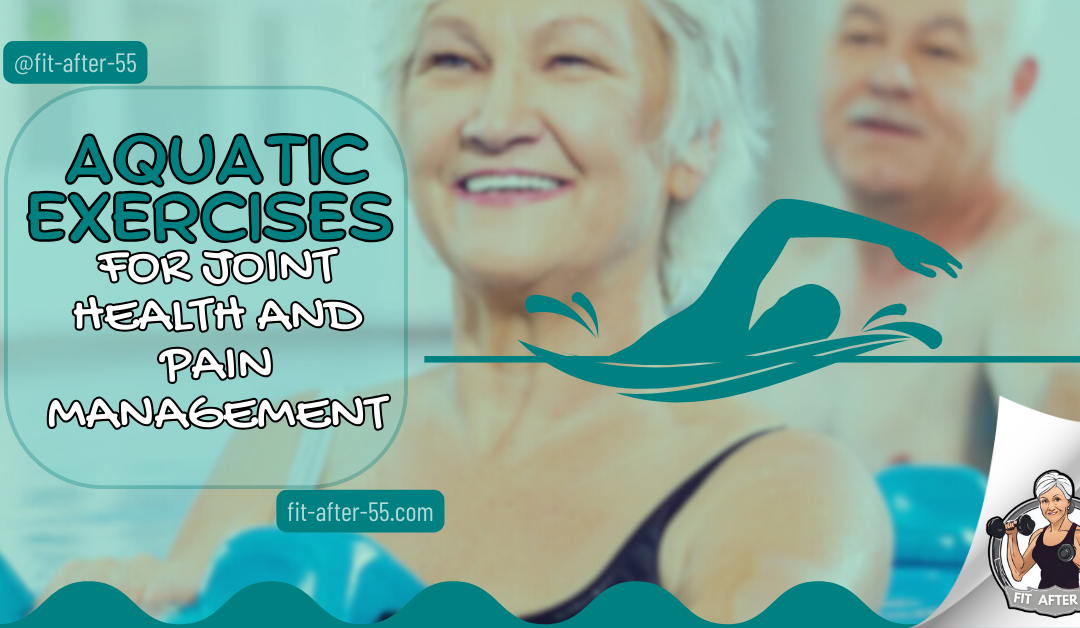Aquatic exercises for joint health and pain management provide a low-impact yet highly effective way for older adults and individuals of all ages to stay active without straining the body. The buoyancy of water reduces pressure on the joints, making movement easier and more comfortable for seniors dealing with arthritis, chronic pain, or injury recovery. Unlike traditional workouts, water-based exercises allow for greater flexibility and range of motion while building strength and endurance.
I have seen just how transformative these exercises can be, especially for older adults looking to maintain mobility and independence. There is something incredibly soothing about moving in the water. It is about physical relief and the mental relaxation it brings. The natural resistance of water provides a gentle yet effective workout, engaging muscles without excessive strain. Aquatic exercises might be the perfect solution if you are looking for a sustainable way to stay active while protecting your joints.
The Healing Power of Water: Aquatic Exercises for Stronger Joints and Less Pain
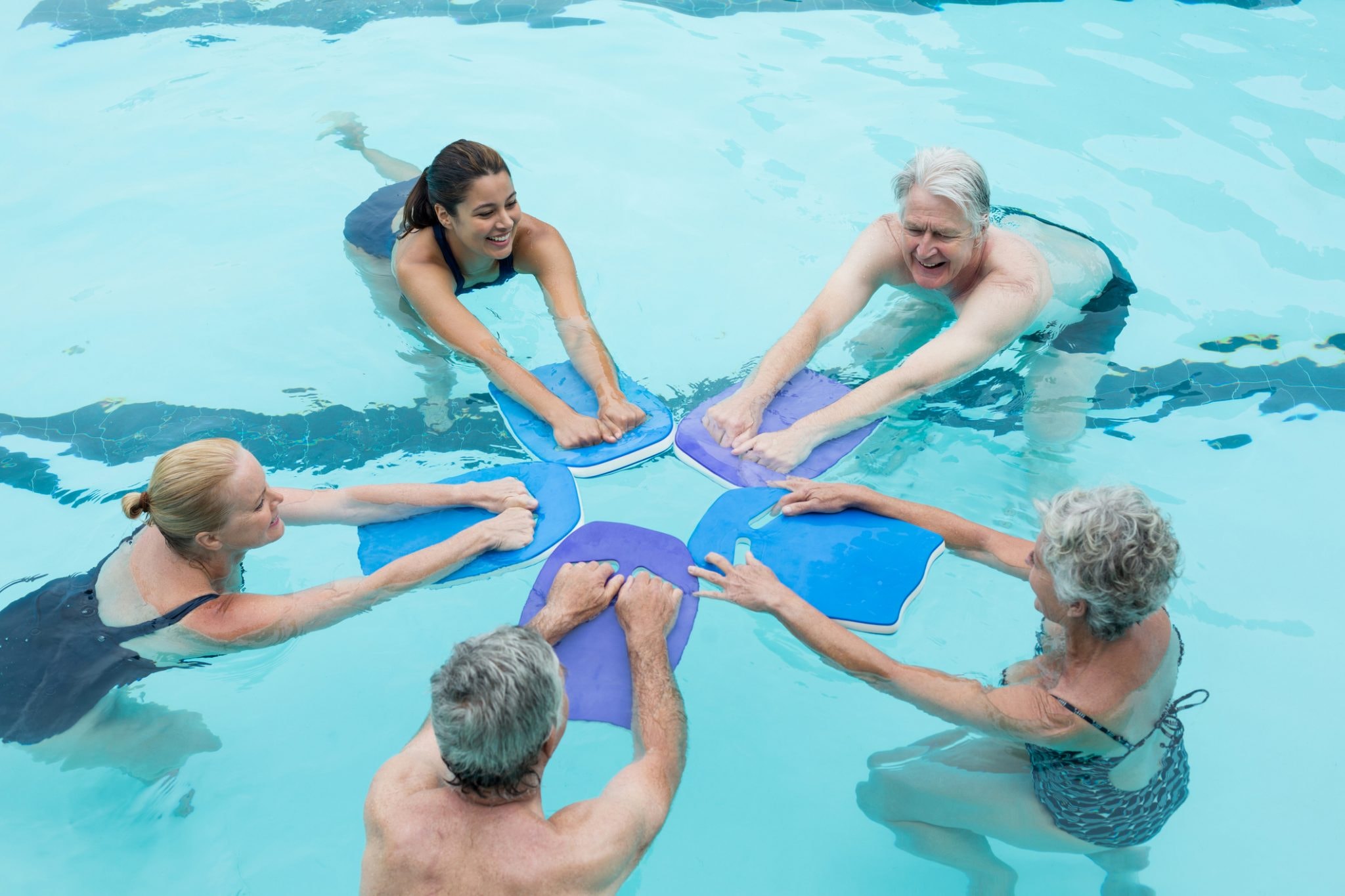
Aquatic exercises have really splashed onto the fitness scene lately, offering something for everyone—whether you’re a fitness newbie or a seasoned pro seeking a low-impact workout. But what makes moving in water a go-to choice for joint health and pain management? It’s all about the unique qualities of water and how they interact with our bodies.
Picture this: You’re floating in the water, and your joints feel almost weightless. That’s because water provides buoyancy, drastically reducing the strain on joints. This means you can move, stretch, and strengthen muscles without the pain you might feel on land.
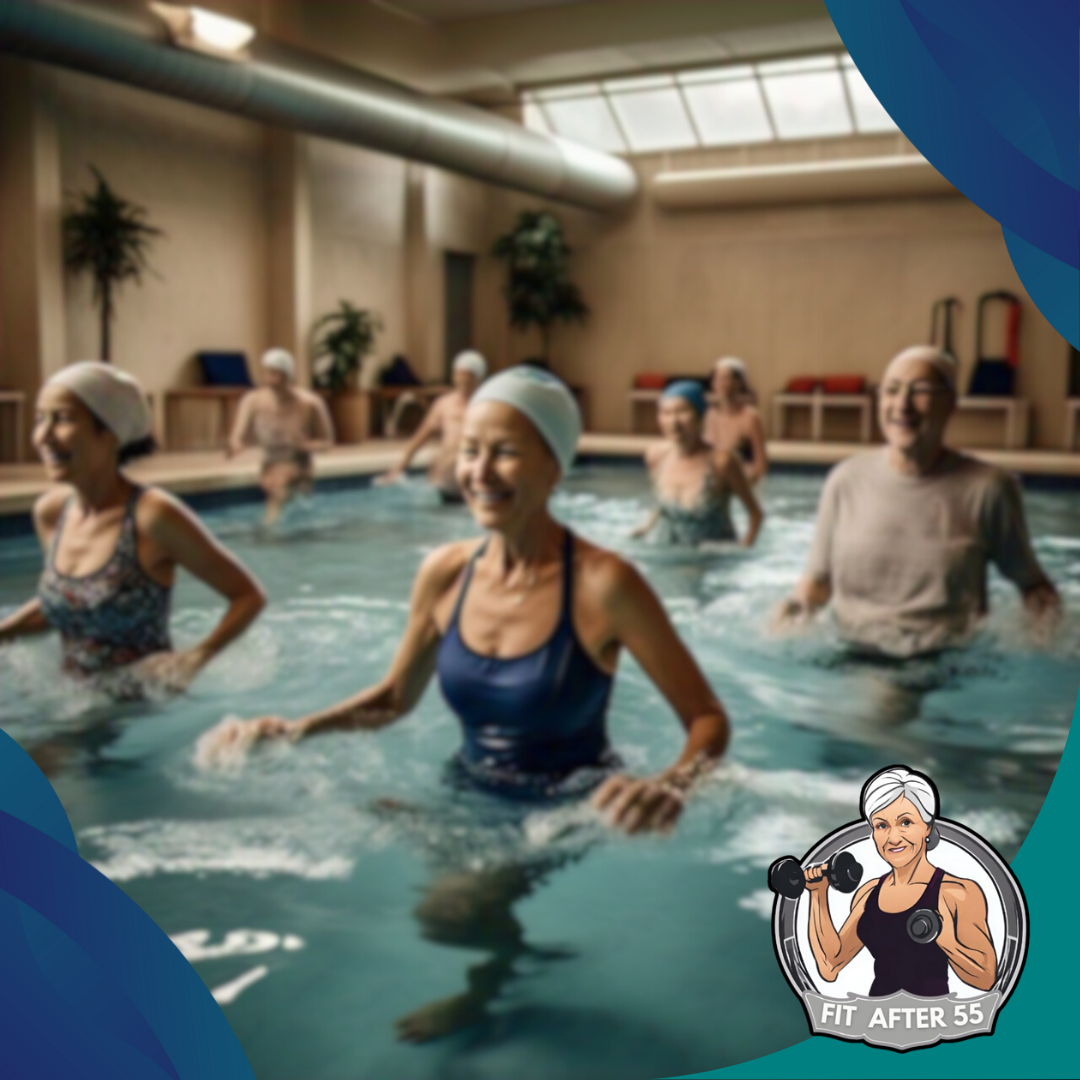
Water isn’t just about floating, though. It offers resistance in every direction. Unlike traditional workouts, where resistance comes from gravity, water lets you push and pull in any way you like, helping to tone and strengthen muscles evenly. So, each session becomes a full-body workout.
Science backs this up. Studies have shown that aquatic exercises can improve mobility and pain, particularly for people dealing with conditions like arthritis. For older adults, the water’s gentle caress can soothe and heal, encouraging the body to move with ease while reducing the risk of injury.
From easing the mind to nourishing the soul, water exercises give you full-body relief that goes beyond just physical benefits. It’s a space where you can focus on your journey, free from distractions and full of promise.
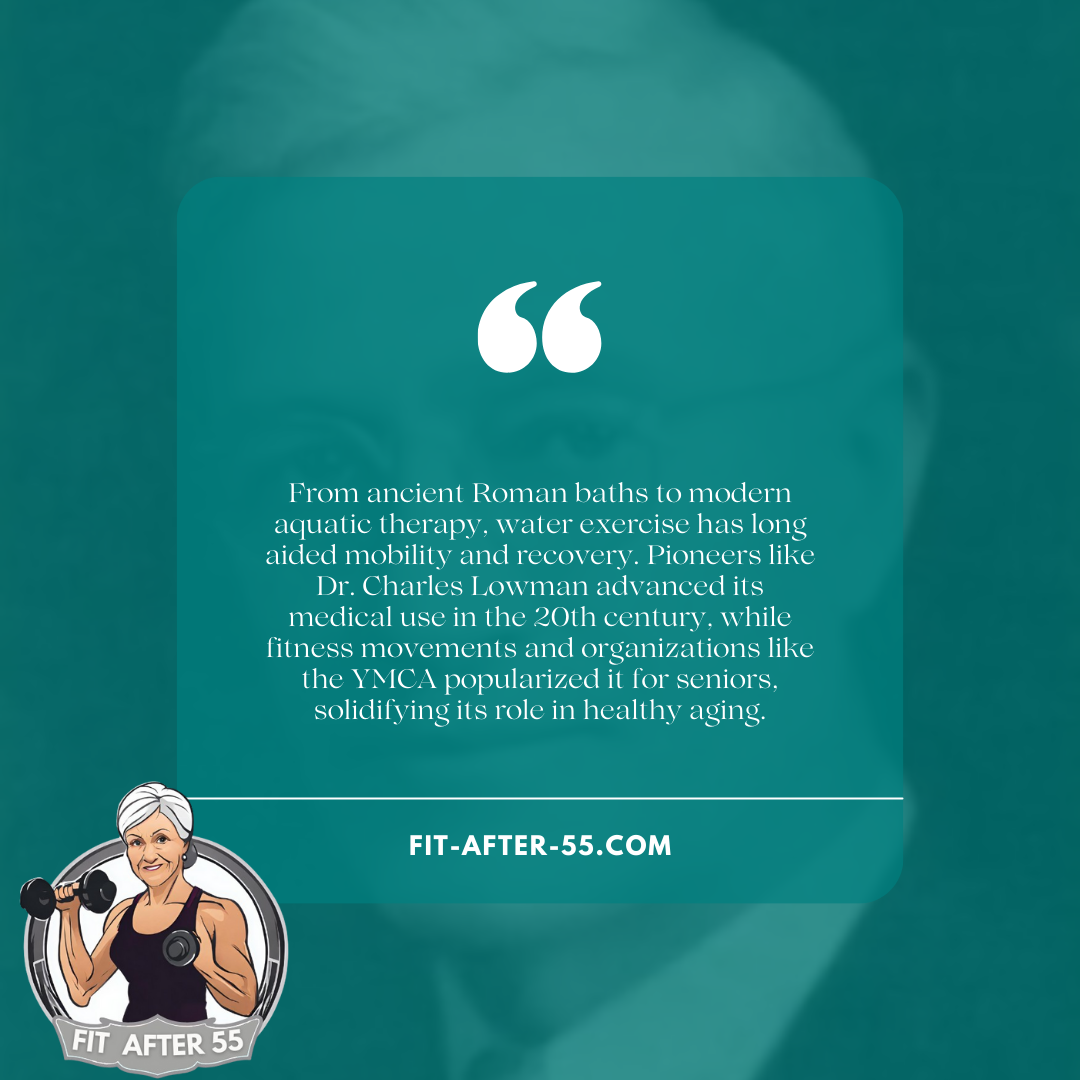
Key Takeaways
- Buoyancy minimizes the impact on joints, making aquatic exercises ideal for seniors, arthritis sufferers, and those recovering from injuries.
- Water naturally provides resistance in all directions, helping improve muscle tone and flexibility without excessive strain.
- Aquatic exercises allow for pain-free movement, reducing the risk of falls or injury while enhancing mobility and endurance.
- Beyond physical relief, water workouts promote relaxation, reduce stress, and create a soothing environment for mental well-being.
- Whether for rehabilitation, pain management, or general fitness, water-based exercises can be tailored to individual abilities and conditions.
Why Water? The Joint-Friendly Medium
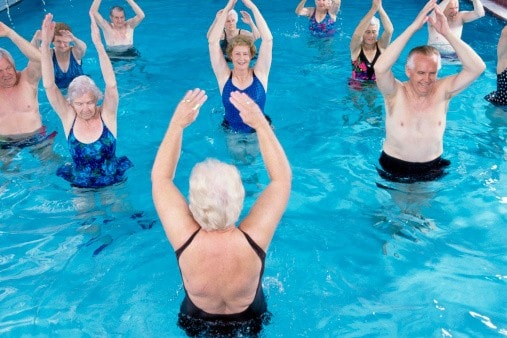
Water’s pretty awesome when it comes to easing joint pain and boosting overall well-being. The key player here is buoyancy, like floating in a safe and comfy harness. When you’re in the pool doing aquatic exercises, your body weight is significantly reduced; this means your joints don’t have to bear as much load, making movement less stressful and more fluid.
Buoyancy for Rehabilitation
This buoyancy makes water a top choice for those dealing with arthritis or needing rehabilitation after an injury. While land exercises might be hard on the knees or hips, water offers a gentle alternative. It’s no wonder water workouts are often recommended by physical therapists for those recovering from surgery or chronic conditions.
Benefits of Water Resistance
A cool thing about water is its resistance. Every move you make requires effort, but it’s smooth and controlled, helping to build strength gradually. So, those muscle toning dreams? Totally achievable. Plus, water resistance is adjustable without even needing equipment just by moving faster or changing directions.
Water also keeps you cool. Unlike a sweaty gym, the pool’s refreshing nature means you can push yourself without overheating. Goodbye to that sticky, uncomfortable feeling you get after a run. Hello to a workout that’s both invigorating and relaxing.
It’s not just joints that love the water; it’s your whole body—and even your mind. For seniors, aquatic exercises can be a game-changer, offering a low-impact way to build strength, improve flexibility, and boost overall well-being.
Plus, the soothing nature of water often lifts spirits, helping to reduce stress and anxiety while giving you a full-body workout that feels a bit like play. Dive right in and let the benefits flood in.
Key Aquatic Exercises for Joint Health
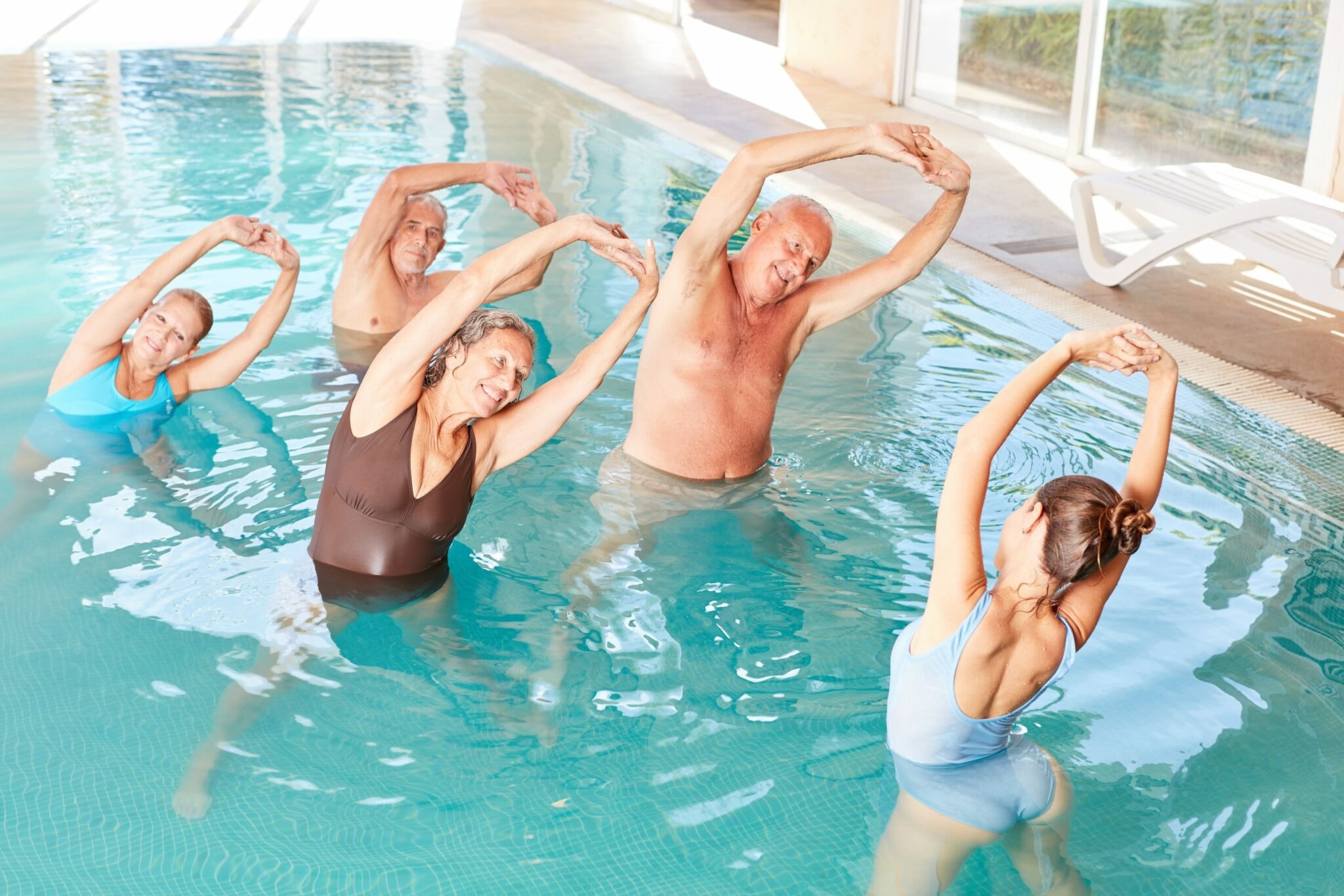
Ready to make a splash with some highly effective aquatic exercises? Whether you want to enhance flexibility, build strength, or just enjoy a gentle workout, the pool’s got you covered. Here are a few exercises you’ll want to try.
Effective Water Movements
Walking in water might seem basic, but it’s a fantastic way to start, especially for older adults looking for a low-impact workout. The water provides enough resistance to make it a super effective exercise for the legs and core without putting stress on the knees.
For a bit more fun, try leg lifts. Hold the pool edge for balance and lift your legs softly—this is excellent for hip mobility and strengthening the lower back, which can be particularly beneficial for seniors. Into something more relaxed?
Floating and gentle stretching can be incredibly soothing. Let the water cradle you while you work on extending those muscles, promoting flexibility and relaxation.
Water Yoga and Pilates
Aquatic yoga and Pilates take things up a notch. These practices combine breath control with movements to stretch and strengthen, enhancing balance and flexibility. It’s like bringing your yoga mat to the pool—the movements are familiar, but the water makes everything feel super smooth.
Resistance Bands in Water
Adding resistance bands in water is the new trend. They’re perfect for intensifying workouts without overdoing it. Resisting water and pulling bands gives your muscles an extra challenge.
The key is to start slow, build confidence, and enjoy what you’re doing. Each move strengthens and conditions without straining, making it perfect for joint health. Dive into trying these exercises and feel the transformation.

Aqua Ready
Precautions should be taken before starting aquatic exercises, such as beginning with a gentle warm-up, staying hydrated, and consulting a healthcare professional if pre-existing conditions are present to ensure the exercises are safe and suitable.
Tailoring Aquatic Workouts: Customizing for Your Needs
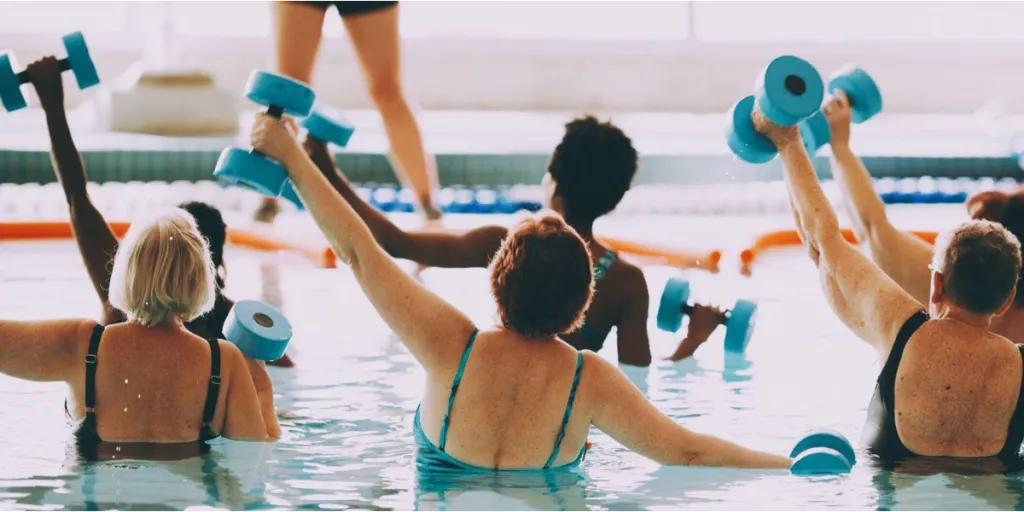
Regarding aquatic exercises, one size doesn’t fit all, and that’s a good thing! Everyone’s body and needs are unique, so tailoring your pool workouts to suit individual conditions is key to getting the most benefits.
Arthritis-Friendly Workouts
For folks dealing with arthritis, sticking to gentle warm-ups and slow-paced exercises can do wonders. The warm water also helps soothe stiff joints, making movements easier and more comfortable. Slow and steady wins the race here.
Managing Pain Safely
Got fibromyalgia or chronic pain? Listen to your body. A mix of floating, stretching, and slow-paced water workouts helps manage pain without triggering flare-ups. Adjust the intensity according to what feels right, and don’t hesitate to take breaks.
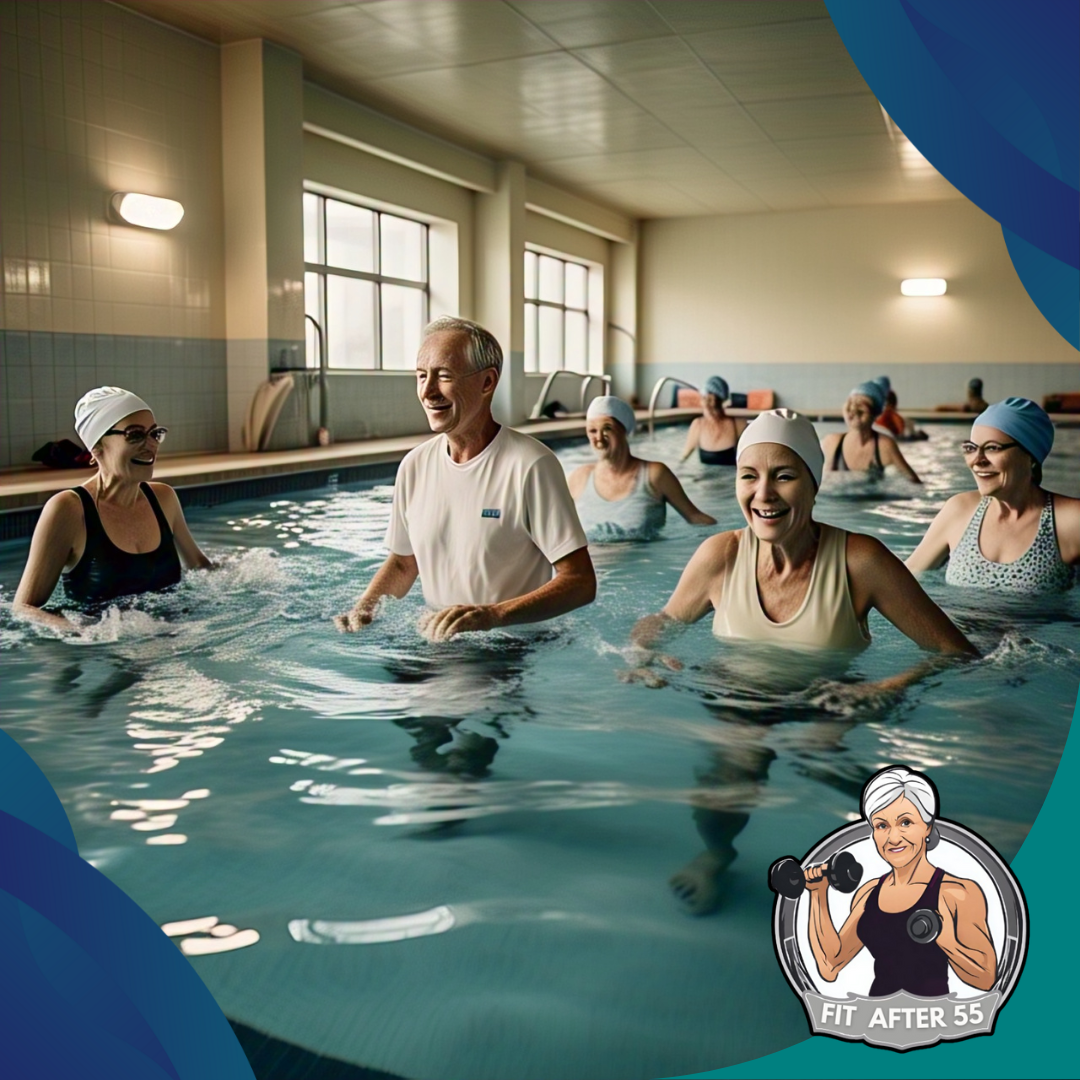
Building Strength in Water
Setting achievable goals is crucial, especially if you’re just getting started with water workouts. Tracking progress keeps you motivated, turning small victories into stepping stones. Celebrate every step forward, like moving from simple water walking to more dynamic exercises.
If something doesn’t feel right, don’t push through the pain. Water may be gentle, but your body still needs time to adjust to new movements. Modify exercises as needed, and consider consulting a physical therapist or aquatic exercise specialist for personalized advice.
The pool is a welcoming space for all stages of fitness, including older adults looking for a low-impact way to stay active. By adapting your water exercises, you can focus on achieving your wellness goals safely and enjoyably. With each session, you get a little stronger, a bit more flexible, and a lot more confident.
Watch this video on aquatic exercises for knees and ankles.
By: ReStart Living
Safety First: Best Practices in Aquatic Exercise
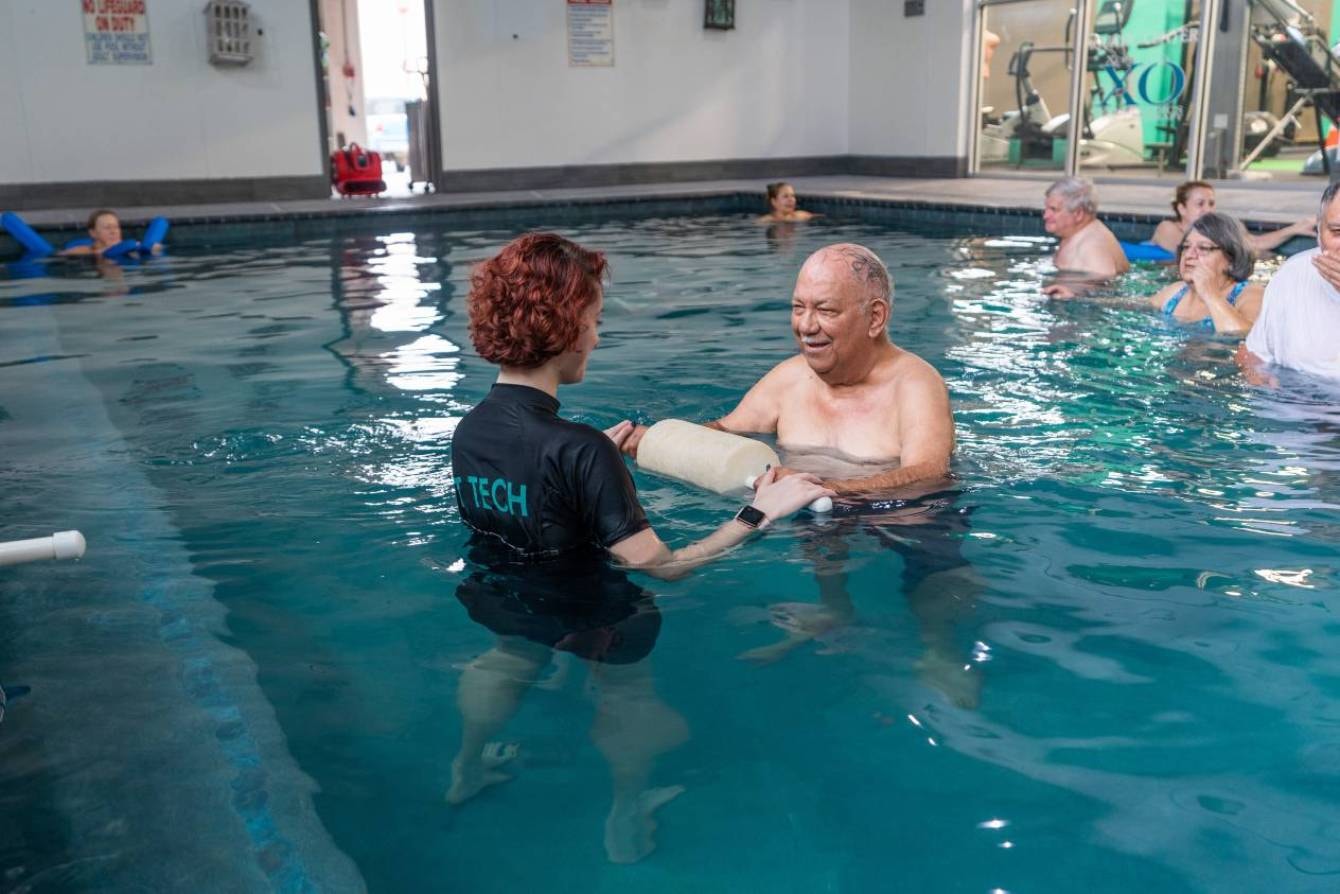
Jumping into aquatic exercises is fantastic, but staying safe is where it all begins. Before making waves, gearing up properly is critical. Invest in a good pair of nonslip water shoes to help with stability, and choose supportive swimwear that allows easy movement.
Keeping hydrated might sound obvious on land, but in water, it’s easy to forget. Even if you don’t feel it, you’re sweating. Regular sips of water before, during, and after your workout keep energy levels up and headaches at bay.
Picking the right pool is also worth a thought. Ideally, choose a pool with a temperature between 82-88 degrees Fahrenheit. Your muscles will feel relaxed without overheating, making exercises more effective.
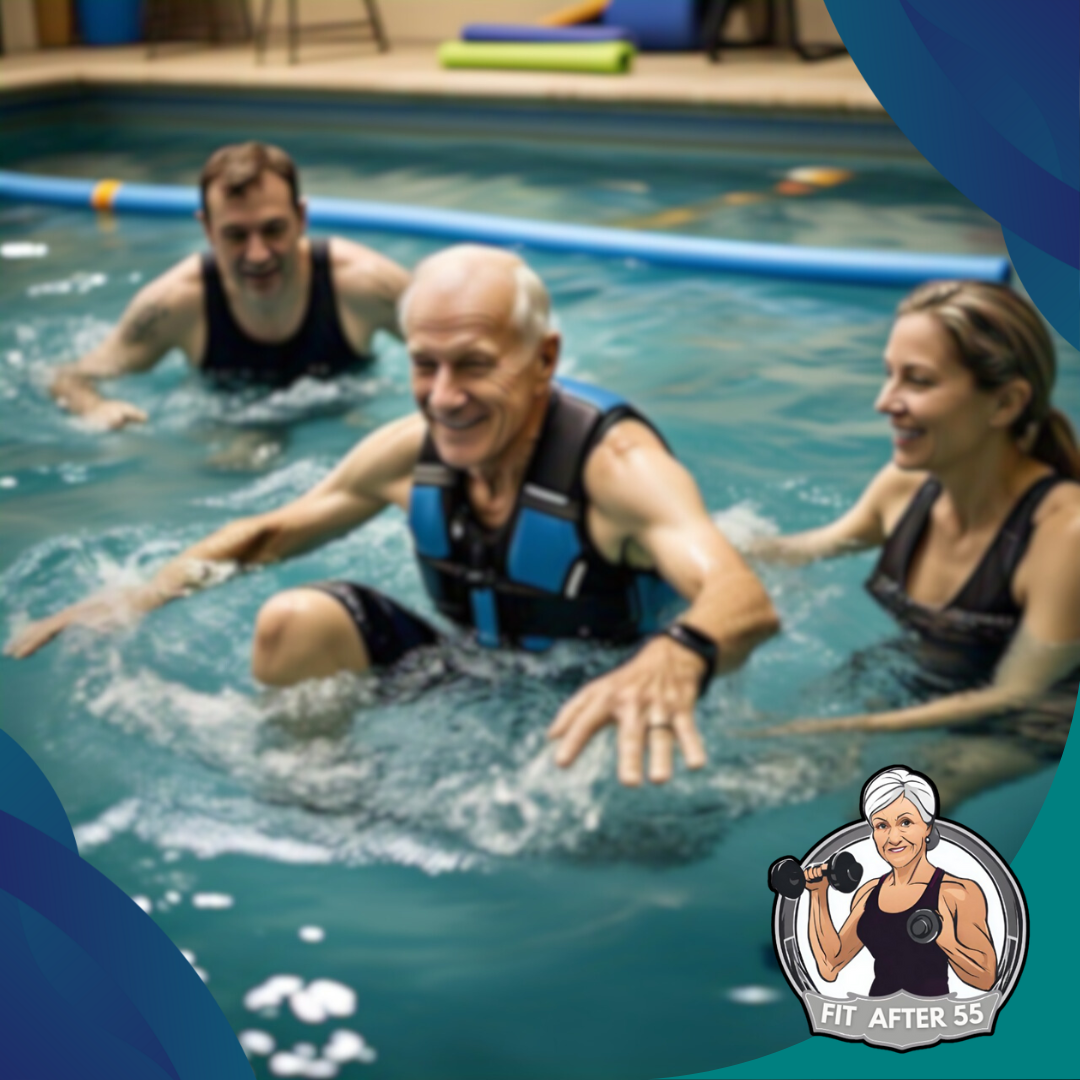
Aquatic Exercise Safety Tips
Safety comes with technique, too. Always start with a simple warm-up to get the blood flowing and those muscles ready. For older adults, focusing on controlled movements is especially important to protect joints and prevent strains.
Don’t hesitate to ask for help. An aquatic instructor can offer valuable insights, especially if you’re new to the water. They can ensure you’re using the correct form and tailoring exercises to fit your capabilities, making aquatic workouts safer and more effective for seniors.
Being cautious doesn’t mean holding back. Following these safety tips allows older adults to fully embrace the benefits of aquatic exercises with peace of mind. Start safe, stay safe, and make every splash count.
Real-Life Transformations: Success Stories in Aquatic Exercise
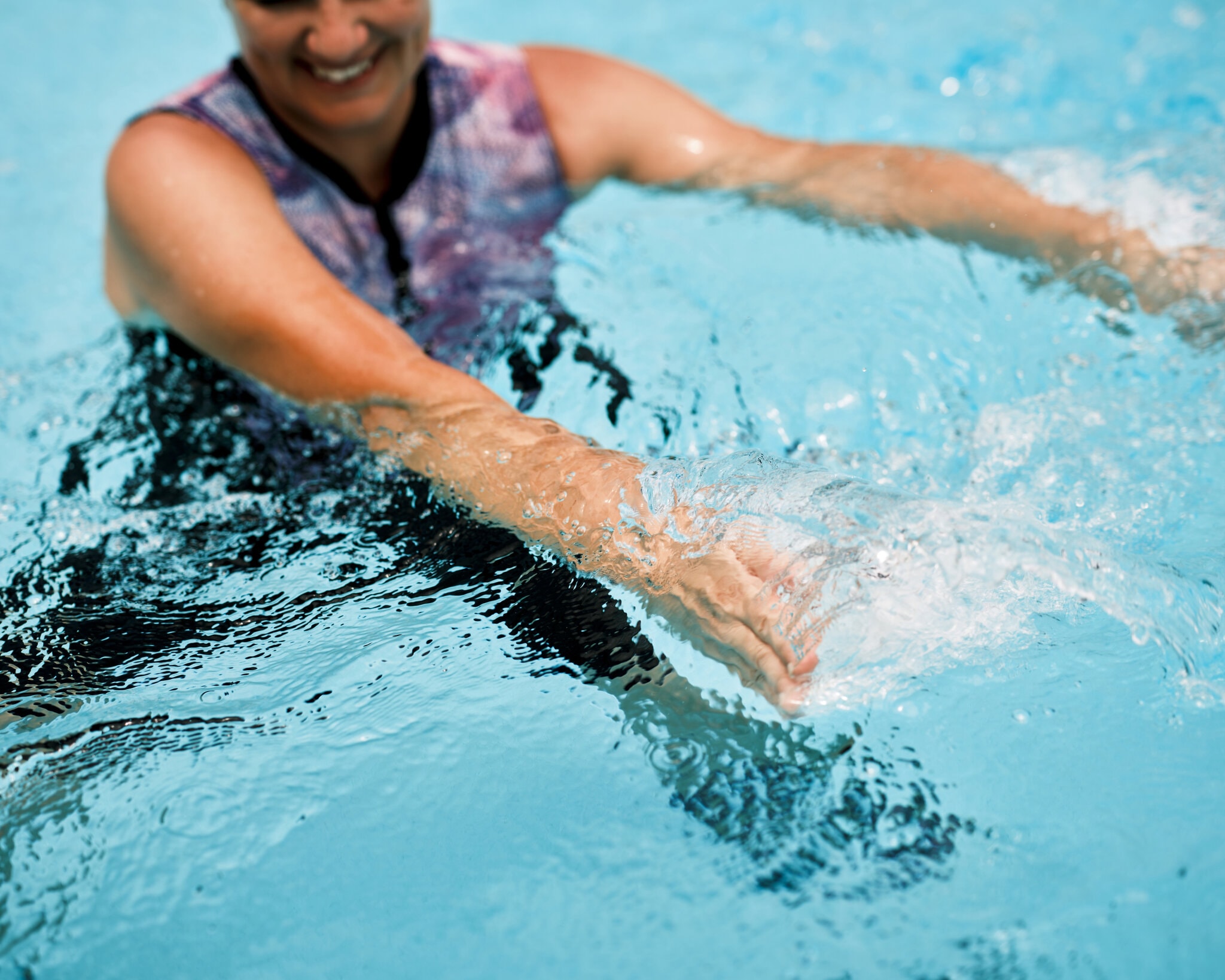
Aquatic exercises are more than just gentle workouts; they’ve become a lifeline for many, opening doors to a realm of healing and vitality. Hearing firsthand stories can spark inspiration and show just how impactful water workouts can be.
Take Jane, for instance. Dealing with arthritis land exercises seemed impossible. But after embracing water workouts, she’s moving freely and can enjoy her daily activities without that nagging pain.
Then there’s Mike, who turned to aqua therapy after knee surgery. With consistent water-based training, he regained strength and agility, surpassing his earlier fitness levels. Pool workouts were instrumental in revamping his recovery journey.
Another tale comes from Sarah, who struggled with fibromyalgia. Finding little relief from conventional therapies, she joined a local water aerobics class. Not only did it ease her symptoms, but the community she found there boosted her spirits and kept her motivated.
Success in water isn’t just about physical improvements. It’s about community and emotional upliftment, too. Many find lifelong friendships in aquatic classes that keep them coming back, not just for exercise but for camaraderie.
These transformations remind us that with patience, positivity, and the right support, aquatic exercise can lead to life-changing results, especially for seniors and older adults looking to stay active and maintain their well-being. Embark on your own water journey, and who knows, maybe someday you’ll inspire others with your story, too.
Check out this video about 7 aquatic exercises for seniors.
By: The Senior Centered PT
Healing in Motion: The Benefits of Aquatic Exercises for Joint Health
Aquatic exercises offer a powerful combination of pain relief, strength building, and overall well-being. By reducing joint stress while providing resistance for muscle engagement, they create an ideal environment for older adults and those seeking a safe and effective workout. Whether recovering from an injury, managing arthritis, or simply looking for a low-impact fitness routine, seniors can benefit from water-based activities that promote long-term mobility and comfort.
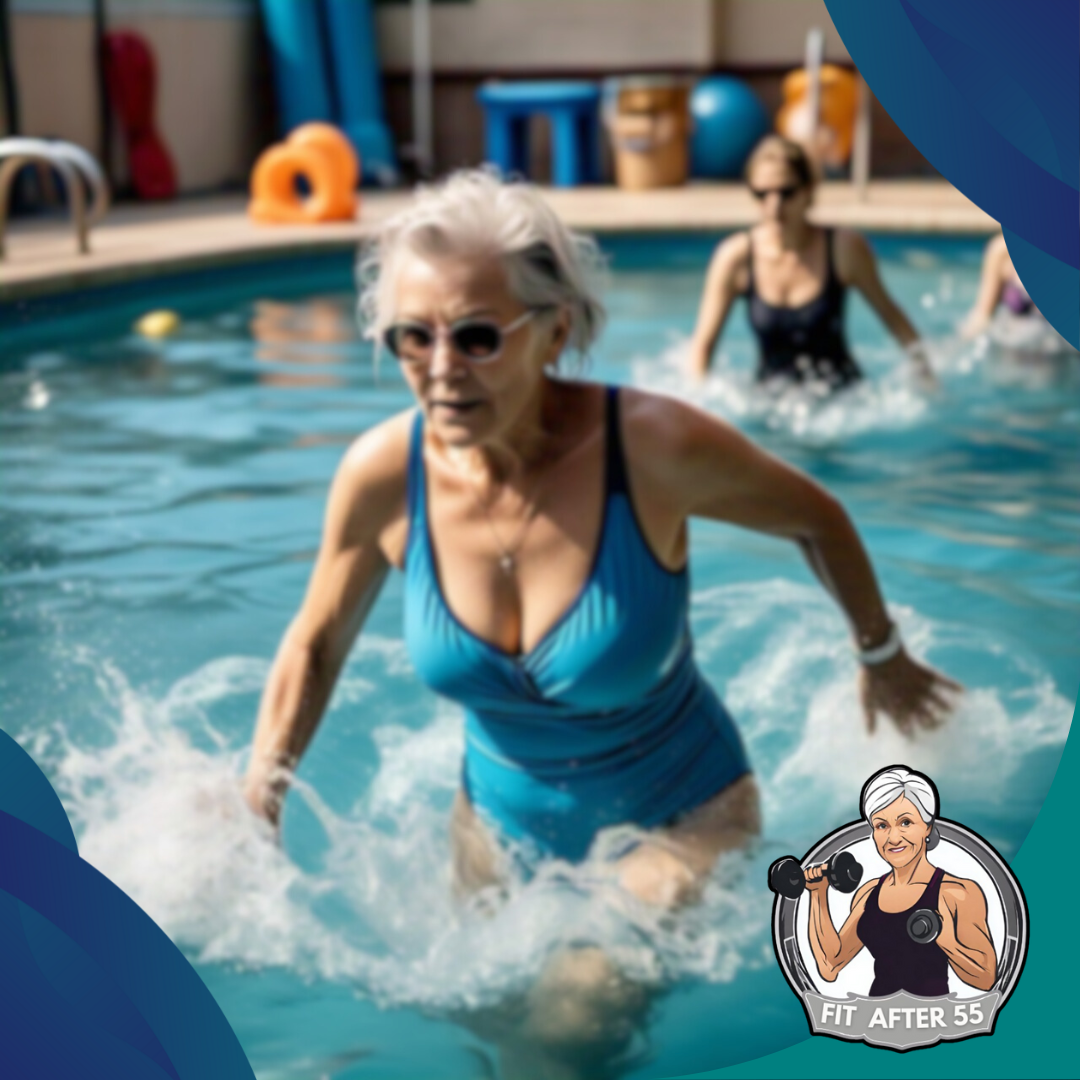
I’ve found that working out in water is not just about easing physical discomfort—it’s also incredibly refreshing and uplifting. The way water supports movement while still offering enough resistance to build strength makes every session feel productive yet gentle. There’s something almost therapeutic about gliding through the water, feeling weightless while still getting a great workout. If you’re looking for a way to stay active without putting too much strain on your joints, I highly recommend giving aquatic exercises a try.
Frequently Asked Questions
Are Aquatic Exercises Suitable for People With Arthritis?
Yes, aquatic exercises are highly recommended for individuals with arthritis. The buoyancy of water reduces stress on joints, allowing for pain-free movement while improving flexibility and strength.
Can Water-based Workouts Help With Chronic Pain Management?
Absolutely! The resistance and gentle support of water help strengthen muscles, improve circulation, and ease stiffness, making it an excellent option for those dealing with chronic pain.
Do I Need to Know How to Swim to Participate in Aquatic Exercises?
No, many aquatic exercises occur in shallow water where swimming skills are not required. Water walking, resistance movements, and stretching can all be done safely with minimal risk.
How Often Should I Do Aquatic Exercises for Joint Health?
For the best results, engaging in aquatic exercises at least 2-3 times a week can help maintain joint flexibility, improve muscle strength, and reduce pain over time.
What Should I Wear for Aquatic Workouts?
It’s best to wear comfortable, supportive swimwear and water shoes to enhance stability and prevent slipping, especially for exercises performed in shallow water.
Revitalize Your Fitness Routine Beyond 55!
Welcome to Fit After 55, your go-to source for staying energetic and active. Whether you’re just starting or already passionate about fitness, we provide valuable insights on setting achievable goals and tracking your progress. Begin your journey today by exploring our website and connecting with our Facebook community!

